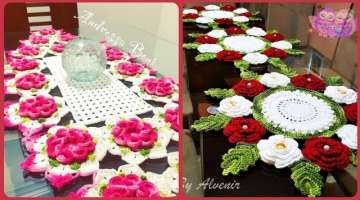14 Of The Most Breathtaking Astronomy Photographs Of The Year 2020 Have Just Been Revealed
Is there anything more breathtaking and surreal than outer space? Often, I feel like there absolutely isn’t. Maybe it’s because of all the celestial masterpieces stars, galaxies, and planets paint, effortlessly sweeping us off our feet? Or maybe we feel this way about space because it’s something we can’t touch, tame, or change?
- 1 | 14

Aurorae category runner-up: Lone Tree under a Scandinavian Aurora by Tom Archer (UK). The photographer decided to explore the area around the hotel on a very crisp -35C evening in Finnish Lapland. When he found this tree, he decided to wait for the misty conditions to change and could not believe his luck when the sky cleared and the aurora came out in the perfect spot. Archer spent about an hour photographing it before his camera started to lock up because of the harsh conditions, but by then he was happy to call it a night. (Photo by Tom Archer/2020 Astronomy Photographer of the Year).
- 2 | 14

Aurorae Winner - 'The Green Lady' By Nicholas Roemmelt. The photographer had heard a lot of stories about the 'lady in green'. Although he has had the chance to photograph the Northern Lights many times, he had never seen the 'green lady' before. On a journey to Norway, she unexpectedly appeared with her magical green clothes making the whole sky burn with green, blue and pink colours. Canon EOS R camera, 14 mm f/1.8 lens, ISO 6400, 4 x 1.6-second exposures.
- 3 | 14

'Galactic Portal' By Marcin Zajac. Galactic Portal was taken by Polish photographer Marcin Zajac during a visit to the coastal town of Kiama in New South Wales, Australia. Zajac waited in a small cave for the splendour of the Milky Way to emerge, and was surprised to glimpse Jupiter among the constellations, which can be seen in the shot as the brightest spot to the left of the central rock stack.
- 4 | 14

'Iceland' By Kristina Makeeva. Insight Investment Astronomy Photographer of the Year is the largest international competition of its kind. Organised by the Royal Observatory Greenwich and sponsored by Insight Investment, the competition receives entries from photographers all around the world. It annually showcases the best space photography from a global community of astrophotographers. Winter surveys in Iceland require some training in terms of wind protection equipment. Iceland is a country with very strong winds, so a stable tripod is required to shoot the aurora. Many wait in a certain place for several hours in a car to capture the Aurora Borealis. We were lucky as we waited that night near Diamond Beach. The reflection of the aurora on the ice was beautiful. Kristina Makeeva.
- 5 | 14

Runner Up - Stars and Nebulae. The Dolphin Jumping out of an Ocean of Gas. This target is officially known as Sh2-308, but the photographer has always enjoyed calling it the Dolphin Nebula.Connor Matherne Winner of the Planets, Comets and Asteroids category presented another mind-bending composition. Lukasz Sujka's impeccably timed shot of a close alignment between the Moon and Jupiter was described by one of the judges as "phenomenal".
- 6 | 14

Skyscapes Runner Up - 'Desert Magic' By Stefan Liebermann. Desert Magic © Stefan Leibermann (Germany) - RUNNER-UP The photographer took this image during a trip through Jordan. He stayed for three days in the desert at Wadi Rum. During the night, the photographer tried to capture the amazing starry sky over the desert. He used a star tracker device to capture the sky. The photographer found this red dune as a foreground and captured the imposing Milky Way centre in the sky. Sony ILCE 7M3 camera Sky: 24 mm f/2.4 lens, ISO 1000, 272-second exposure Foreground: 24 mm f/8 lens, ISO 800, 20-second exposure.
- 7 | 14

Skyscapes Winner - 'Painting The Sky' By Thomas Kast. The winner of Skyscapes is the photo called "Painting the Sky" taken by Thomas Kast. The photo captures polar stratospheric clouds in Finnish Lapland, looking like a spectacular water color painting. "Clouds are said to be the bane of astronomers, but they can also be the inspiration for a breathtaking astrophoto. These rare, incredibly high nacreous clouds reflect colour like oil does on water and this photographer has captured them perfectly. With subtle processing they have brought out the vibrant hues that can sometimes be seen in our skies," commented the Art Editor at the BBC Sky at Night Magazine Steve Marsh.
- 8 | 14

Galaxies Winner And Overall Winner - 'Andromeda Galaxy At Arm's Length' By Nicolas Lefaudeux. The Royal Observatory Greenwich has just unveiled the winners of the coveted 2020 Astronomy Photographer of the Year awards. And this year's top prize went to a beautiful photograph of the Andromeda galaxy that makes it seem as if you could actually reach out and touch it. The winner of the Galaxies category, overall winner, and title of 2020 Astronomy Photographer of the Year went to France's Nicolas Lefaudeux for his stunning photograph titled Andromeda Galaxy at Arm's Length?
- 9 | 14

Our Sun Runner Up - '145 Seconds Of Darkness' By Filip Ogorzelski. Our Sun winner is the photo taken by a British photographer Alexandra Hart called "Liquid Sunshine." "This is a stunning example of how the 'quiet' Sun is never truly quiet. While the Sun may be less active, the nuclear fusion ongoing below its surface sustains all life on our little world," commented astrophysicist, astronomer and science communicator at Royal Observatory Greenwich Emily Drabek-Maunder.
- 10 | 14

HDR Partial Lunar Eclipse with Clouds © Ethan Roberts (UK) - RUNNER-UP During the 2019 partial lunar eclipse, the photographer managed to capture this fantastic image of the Moon while a small cloud passed in front of it. You can see the Earth's shadow on the top right and its striking orange colour caused by the Sun's light passing through the atmosphere. This is a high dynamic range image, meaning both the darker, shadowed region is correctly exposed as well as the much brighter parts of the Moon. This processing technique also allows the clouds to be seen more clearly, giving the Moon a similar appearance to that of a solar corona. Sky-Watcher Evostar 80ED telescope, Sky-Watcher EQ5 SynScan mount, Canon EOS 100D camera, 600 mm f/7 lens, ISO 800, composite of 5-second, 1-second, 1/10-second and 1/30-second exposures
- 11 | 14

Cosmic Inferno © Peter Ward (Australia) – WINNER. NGC 3576 is a well-known nebula in southern skies, but is shown here without any stars. Software reveals just the nebula, which has been mapped into a false colour palette. The scene takes on the look of a celestial fire-maelstrom. The image is intended to reflect media images taken in Australia during 2019 and 2020, where massive bushfires caused the destruction of native forests and have claimed over 12 million acres of land. It shows nature can act on vast scales and serves as a stark warning that our planet needs nurturing.
- 12 | 14

Liquid Sunshine © Alexandra Hart (UK) – WINNER. Solar minimum may be seen as a quiet Sun and deemed dull in white light, but if you look closely at the small-scale structure, the surface is alive with motion. This surface is about 100 kilometres thick and the ever-boiling motion of these convection cells circulate, lasting for around 15 to 20 minutes. They are around 1,000 kilometres in size and create a beautiful 'crazy paving' structure for us to enjoy.
- 13 | 14

Waves © Bence Toth (Hungary) – WINNER. The image shows the central region of the California Nebula (NGC 1499). It tries to show the uncontrollable vast energy of nature, in a form which resembles the huge waves of a storm in the ocean. The RGB channels are used the create the colours of the stars, and all of the nebulosity are synthetized from the hydrogen-alpha and the SII channels. The colour assignment of the narrowband channels is done in a way to create an image close to true colour, but preserving the fine details and the depth provided by the narrowband filters.
- 14 | 14

Tycho Crater Region with Colours © Alain Paillou (France) – WINNER. The Tycho crater is one of the most famous craters on the Moon. This huge impact has left very impressive scars on the Moon's surface. With the colours of the soils, Tycho is even more impressive. This picture combines one session with a black-and-white camera, to capture the details and sharpness, and one session with a colour camera, to capture the colours of the soils. These colours come mainly from metallic oxides in small balls of glass and can give useful information about the Moon's geology and history. The blue shows a high titanium oxide concentration and the red shows high iron oxide concentration. This picture reveals the incredible beauty and complexity of our natural satellite.


















